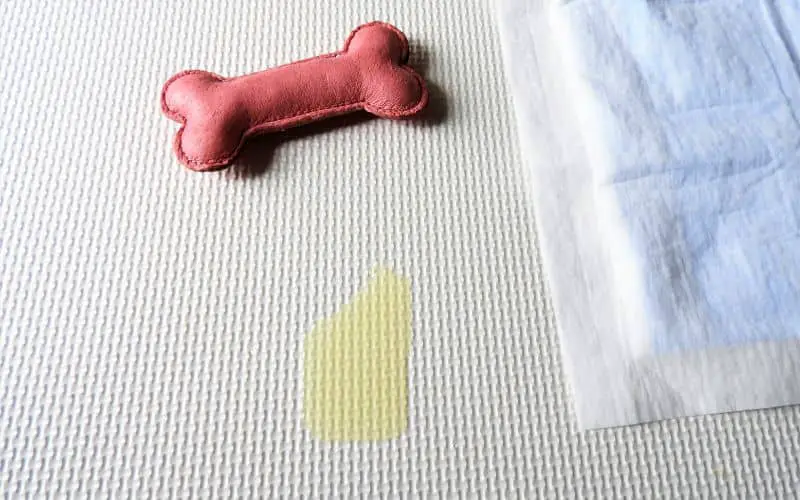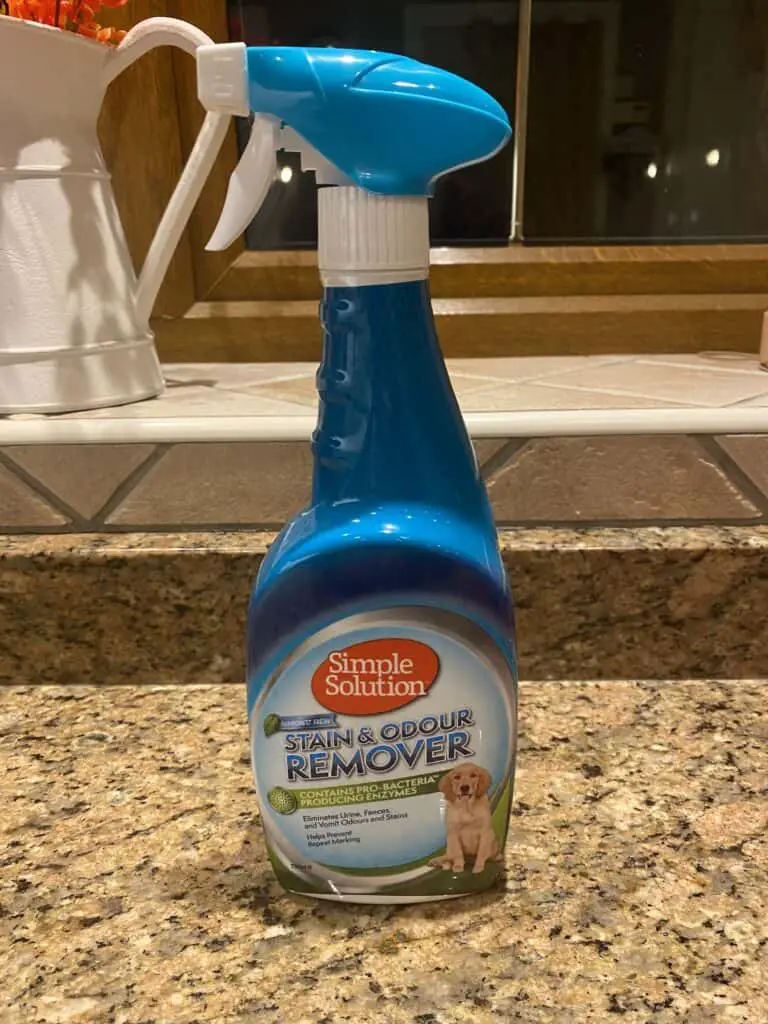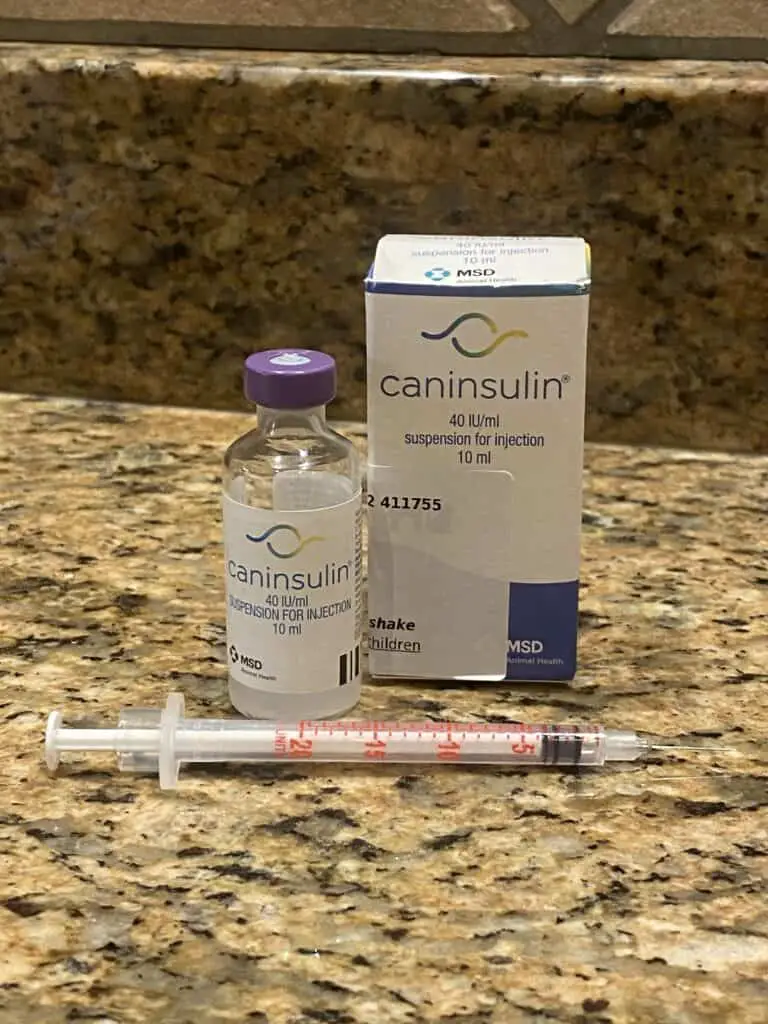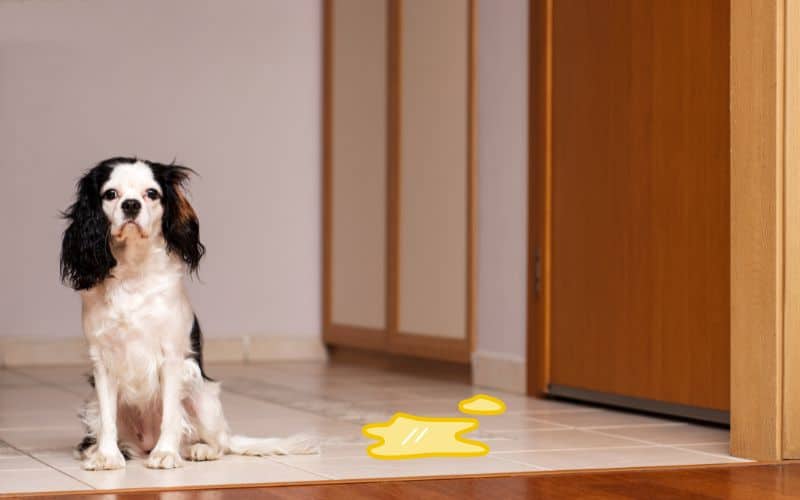Diabetes in dogs is more common than you would think, and if it isn’t treated, it can lead to many problems. Excessive urination is one of the classic signs that your dog has diabetes, so in this article, we will find out how to stop a diabetic dog from peeing in the house.
Diabetes causes increased thirst and excessive urination, so treating diabetes will lower your dogs’ thirst and the frequent need to pee.
So we know the problem, but where do we go from there? Don’t run around the house in a blind panic as I did. Read on, as we have looked into frequently asked questions related to this topic.
Why is my diabetic dog urinating in the house?
As good, caring canine parents, you have probably trained your dog to do its toilet behavior outside, and so you should; I certainly did.
My dog, a Cavalier King Charles Spaniel, named Lady, would never dream of peeing in the house, so when she did, it was a real shock to us all.
Initially, we thought it was her age, as she is an older dog, 11 years old at the time of writing. But it turned out that she was diabetic, which was why she’d started to pee in the house; let me explain.
When your dog has diabetes, there is a lack of insulin in the body. Insulin uses the glucose found in food to feed the blood cells, but if there isn’t enough insulin, this cannot be achieved, so the body tries to flush out the excess glucose that is not used through the urine.
Flushing glucose out of the body requires a lot of water, which causes your dog to drink more. When more water is drunk, there is only one way out, and that’s through their pee, and as the amount of water drunk is excessive, they are unable to hold themselves, so they have accidents in the house.
Why does my diabetic dog pee at night?

Before we had Lady diagnosed with diabetes, she mainly had accidents at night. She sleeps on the floor in our bedroom, sometimes on the bed if she is cold, but it was summertime, so she was on the floor.
We noticed her fur underneath and on the inside of her hind legs was damp, and so was the blanket she lay on to sleep. She wasn’t wet, as if she had peed, but damp as if she had had a little leak from her bladder.
We noticed that she drank more water throughout the night, but it was summertime and quite hot at night, so we put it down to that. She didn’t get us up to take her out for a pee, so she held herself all night; no wonder she had a leak or two, poor thing. So we bought puppy pads to put under her blanket for her to sleep on to try and help.
Eventually, she got to the stage where she needed to pee through the night. She was now taking in enormous amounts of water, drinking dry 2 large bowls every night. This wasn’t summertime consumption. It was way too much and not normal dog behavior, so we took her to the vet, and that’s when she was diagnosed.
She was peeing in the house because of the amount she was drinking, and she had never gone out to pee at night; it was alien behavior for her. So she held herself and had small leaky accidents.
Although we had to wait until the nightly accidents were under control, we still ensured she had plenty of water to drink. Never withhold water from your diabetic dog, as this can cause more health issues.
Do diabetic dogs lose bladder control?
With the excess of water building up, diabetic dogs can, unfortunately, lose bladder control. Urinary incontinence is expected in diabetic dogs, but if the diabetes is caught and treated quickly, this may help alleviate the situation.
However, if your dog still has bladder control problems after administering the correct insulin dosage, it can be treated with drugs such as Phenylpropanolamine (PPA) or Estrogens.
Phenylpropanolamine is usually the first choice, but if your dog suffers from high blood pressure, kidney disease, or heart disease, it will not be given this medication.
Estrogens have fewer side effects, and 90% of dogs respond positively. However, there is a very small chance that your dog could develop bone marrow suppression, so it is vital to attend twice-yearly checkups at the veterinarian.
How to clean diabetic dog pee?
How do I put this politely without upsetting Lady? Dog pee stinks, a lot, and if you have carpet around the house as we do, it’s not easy to get rid of.
So we went to a local pet store and asked for advice on getting rid of the pee (and the stink). We were informed that Simple Solution Stain & Odour Remover was the best thing to use.

However, we live in the UK (which is why the word odor looks weird to some readers), so I am unsure if this product is available in your location. So I did a little digging and found this product for our friendly readers in the US, which is manufactured by the American Kennel Club, so it must be good.
For our friends in Canada, I found this reasonably priced product with quite high reviews. Also, it made me laugh as it is for kids and pets, and I now have an image of kids peeing all over the house.
For our Australian friends, Urine Off is the number one recommended product by veterinarians, but it seems quite expensive.
Not forgetting our Japanese friends, there is this Skunk Odor Remover that people use, and I’ve got to be honest, if it can get rid of skunk odor, it can pretty much get rid of all smells. I wish we had that over here.
My dog is on insulin and still drinking a lot
This is something we worried about after diagnosis, it seemed like Lady would never get back to normal. She still drank a lot of water even though she was on insulin injections.
After speaking to Hamish almost every day (Hamish is our local veterinarian, and he is amazing at his job), he told us that getting the correct amount of insulin is a slow process. As all dogs are different and react differently to drugs, a low dosage is always the starting point.
Hamish also explained that in the short term, it is better for your dog to have high blood sugar than low blood sugar, as low blood sugar can cause seizures and even death. So we were quite happy to endure a few more weeks of accidents, as it meant that Lady was slowly on the mend.
So if your dog is still drinking a lot of water, even if they are on insulin, then speak to your veterinarian to find out if they are on the correct insulin dosage.
Symptoms of not enough insulin in dogs

Not enough insulin in the body means too much glucose, so your dog will have excessive thirst and urination to try and remove it. You may also see some of the following symptoms:
- Weight Loss
- Lack of Energy
- Increased Appetite
It’s very important to ensure your dog is getting enough insulin, as too much glucose over time can cause the following medical problems:
- Cataracts or Blindness
- Urine Infections
- An Enlarged Liver
- Kidney Failure
- Seizures
- Ketoacidosis
Ketoacidosis is particularly nasty, as it can quickly lead to death if you don’t get the correct medical treatment. Lady had ketoacidosis, and it was a very worrying time. You can read about our ordeal here


2 thoughts on “How to Stop a Diabetic Dog from Peeing in the House”